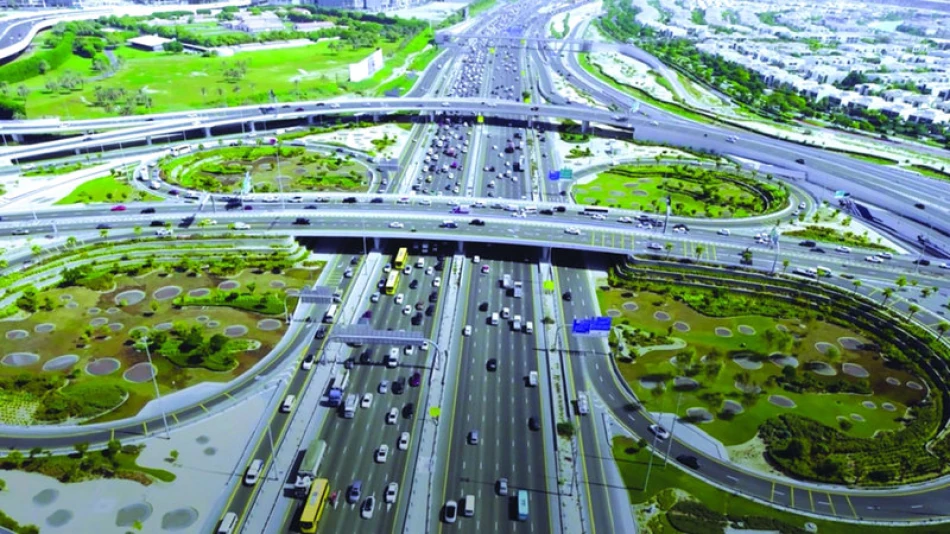
Dubai Transforms Major Intersections with $52M Beautification Projects
Dubai Transforms Into Urban Oasis With $52 Million Green Infrastructure Blitz
Dubai Municipality has completed a massive landscaping initiative worth 190 million dirhams ($52 million) across over three million square meters of the emirate's key intersections and streets in the first half of 2024. The project plants over 300,000 trees and shrubs while deploying cutting-edge smart irrigation systems, positioning Dubai as a frontrunner in sustainable urban development amid growing global competition for livability rankings.
Strategic Locations Target Maximum Visual Impact
The beautification efforts concentrated on Dubai's most visible arteries, including the intersection of Al Khail Street with Latifa bint Hamdan Street, and Sheikh Zayed bin Hamdan Street's junction with Tripoli Street. The municipality also transformed Sheikh Rashid Street from Sheikh Khalifa bin Zayed intersection to Al Mina Street, plus strategic sections of Sheikh Zayed Road from the seventh intersection—Dubai's primary gateway from Abu Dhabi.
This geographic selection reflects Dubai's understanding that first impressions matter enormously for a city competing with Singapore, Hong Kong, and other global hubs for tourism and business investment. The Al Khawaneej Street intersection with Al Amardi Street rounds out the targeted zones, creating a comprehensive network of green corridors.
Technology-Driven Sustainability Sets New Standards
Beyond the impressive scale—300,000 trees and shrubs plus 222,500 square meters of ground cover and flowers—Dubai's approach showcases advanced irrigation technology that other cities will likely emulate. The new systems feature underground pumps that maximize surface space utilization while connecting to Internet of Things (IoT) remote monitoring networks.
Smart Water Management Revolution
The remote-controlled irrigation systems enable real-time monitoring and adjustment of pump stations, dramatically improving water consumption efficiency. This technology addresses one of urban landscaping's biggest challenges: maintaining green spaces in arid climates without excessive resource consumption. For a region where water scarcity concerns are paramount, this innovation could become a model for Middle Eastern cities from Riyadh to Doha.
Economic and Social Returns on Green Investment
Dubai's green infrastructure spending aligns with the emirate's Urban Plan 2040 and Quality of Life Strategy 2033, but the economic rationale extends beyond policy compliance. Research consistently shows that well-maintained urban greenery increases property values, reduces urban heat island effects, and improves air quality—factors that directly impact Dubai's competitiveness as a business destination.
The project's integration of local species like Sidr, Ghaf, and Neem trees with ornamental varieties including Chorisia, Washingtonia, and Poinciana creates biodiversity while reducing maintenance costs. This mixed approach demonstrates sophisticated urban planning that balances aesthetic appeal with environmental sustainability.
Setting Regional Benchmarks
Dubai's current green infrastructure now encompasses over 5.5 million trees and shrubs under municipal supervision, plus 8.7 million square meters of green spaces and 2 million square meters of seasonal flowers. These numbers position Dubai favorably against regional competitors and reflect the emirate's systematic approach to urban development.
The inclusion of adaptive LED lighting systems at key intersections—featuring colors that change for national occasions and designs inspired by traditional Arabic architecture—shows how Dubai integrates cultural identity with modern infrastructure. This attention to detail in public spaces reinforces Dubai's brand as a premium destination.
Implications for Urban Development Globally
Dubai's massive green infrastructure investment signals a broader shift in how cities approach livability and sustainability. As remote work reduces the necessity of living in traditional business centers, cities must differentiate themselves through quality of life improvements. Dubai's systematic approach—combining technology, sustainability, and cultural elements—provides a template that other rapidly developing cities will likely study and adapt.
The project's success will be measured not just in immediate visual impact, but in long-term sustainability metrics and its contribution to Dubai's position in global livability rankings. With climate change making urban heat management increasingly critical, Dubai's investment in green infrastructure represents both environmental stewardship and economic strategy.
Most Viewed News

 Sara Khaled
Sara Khaled






